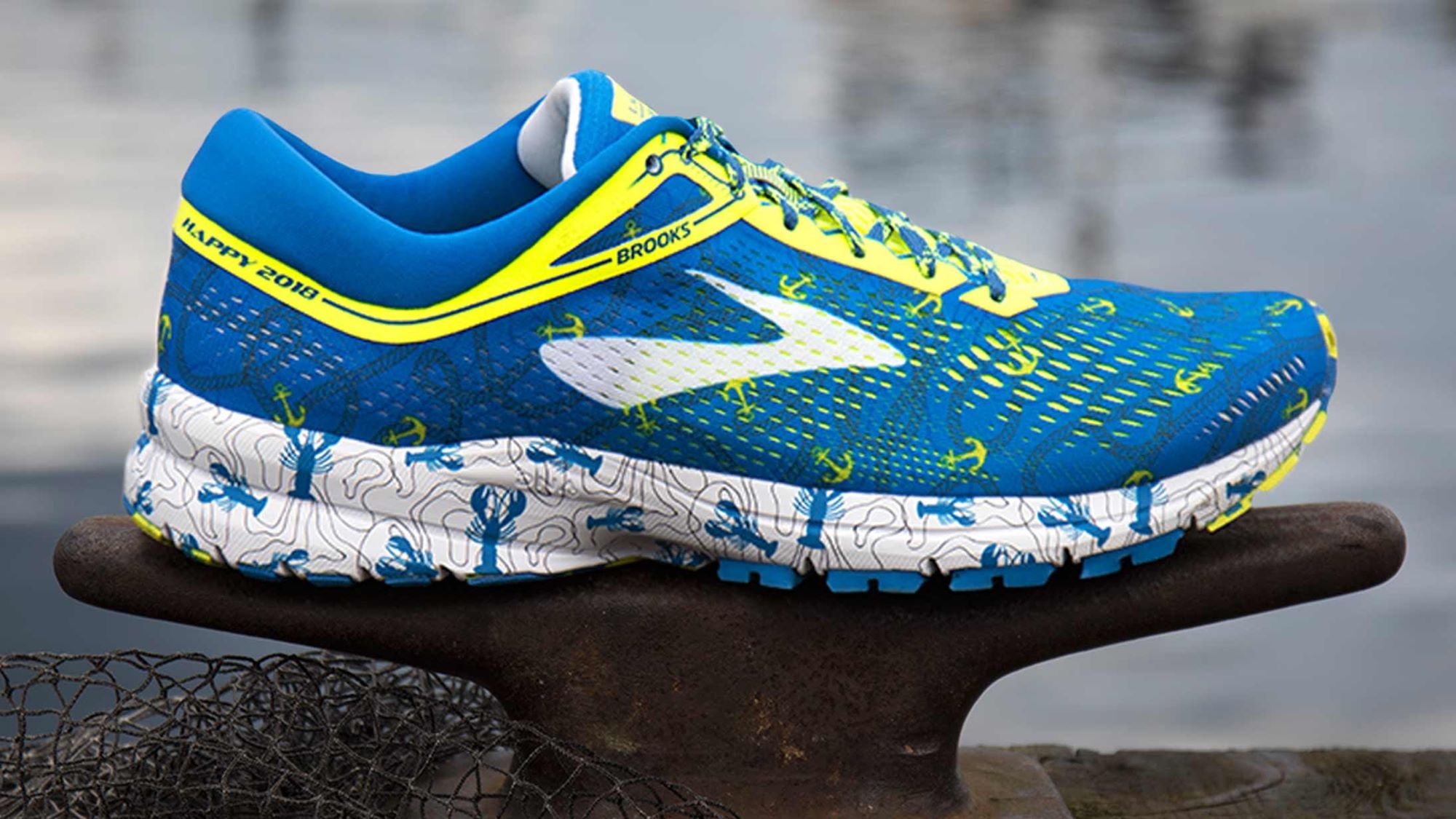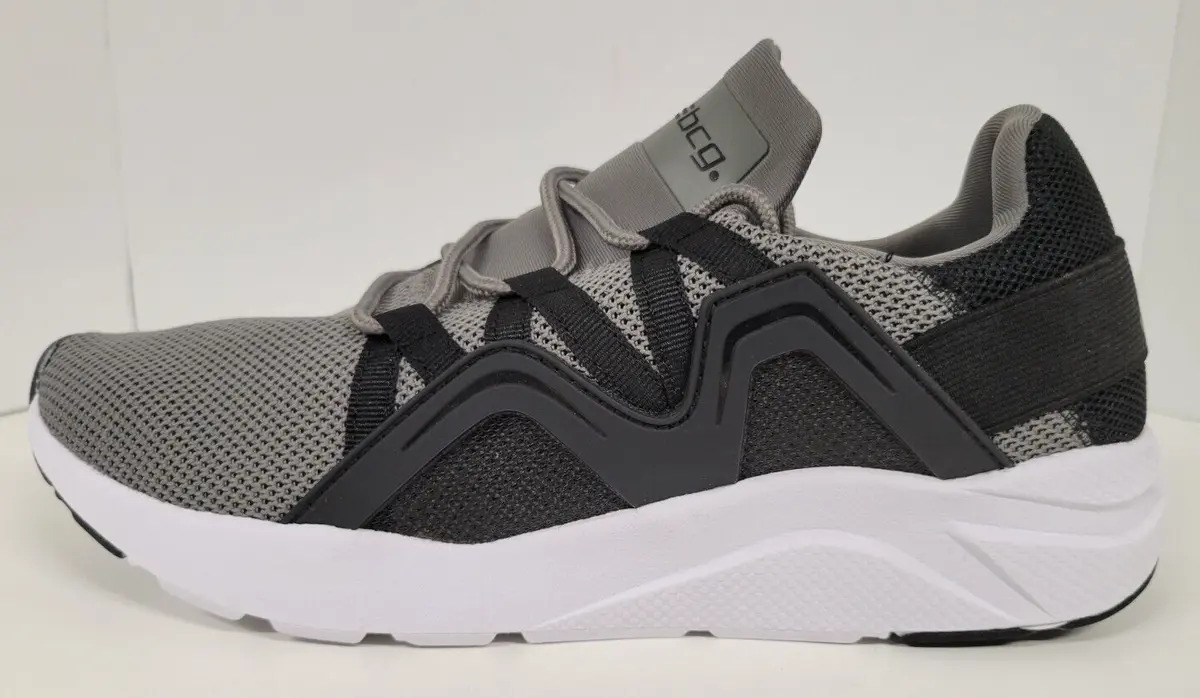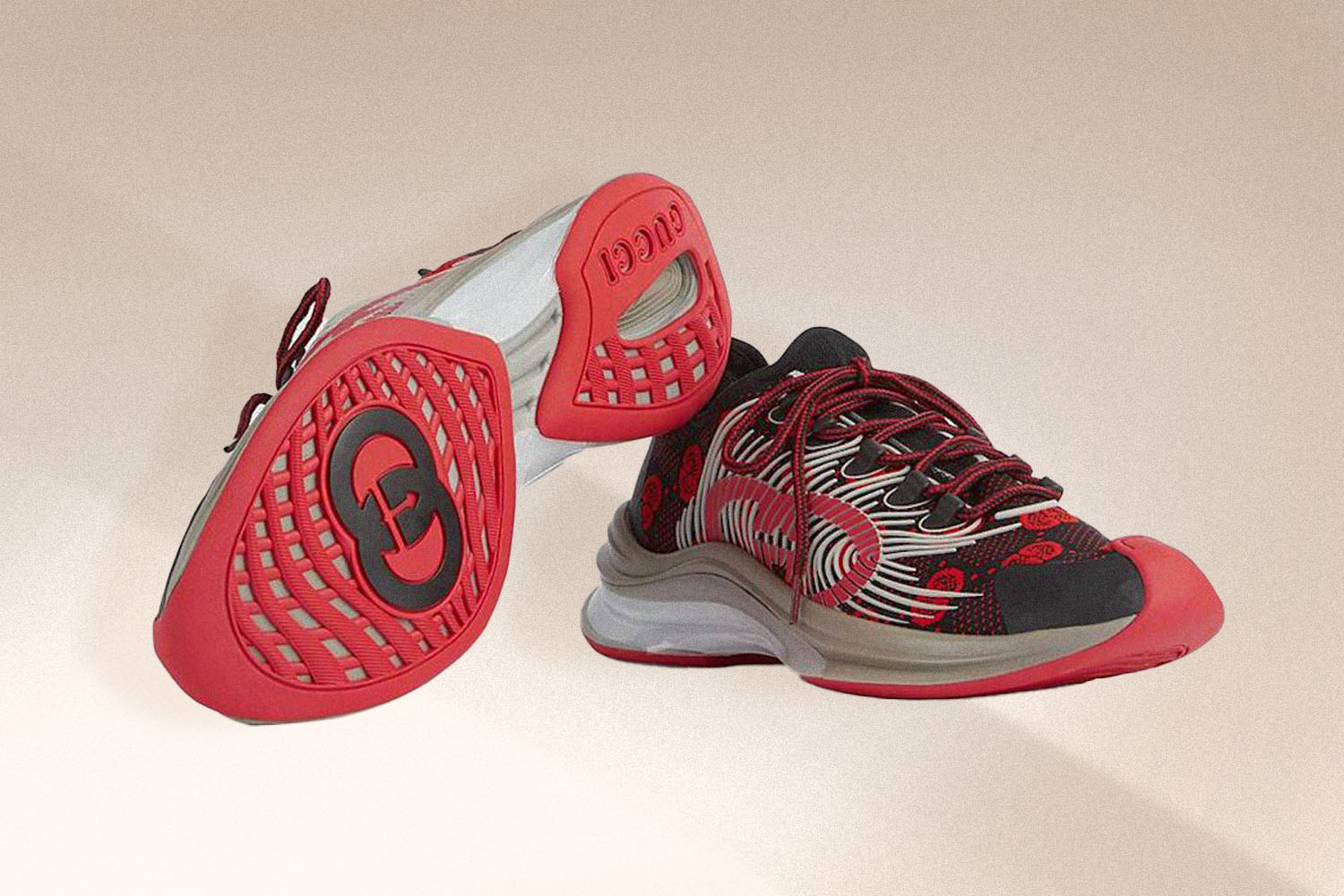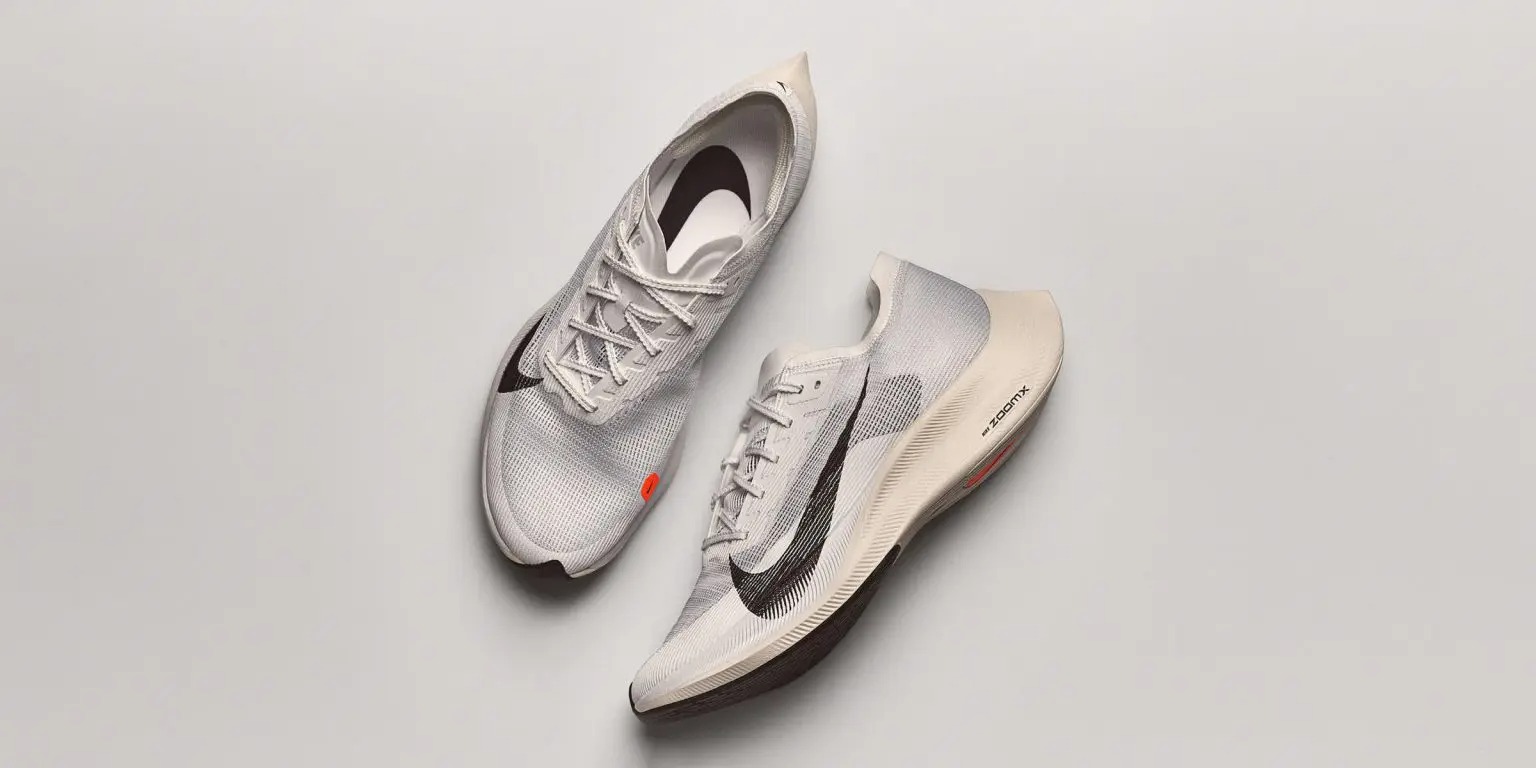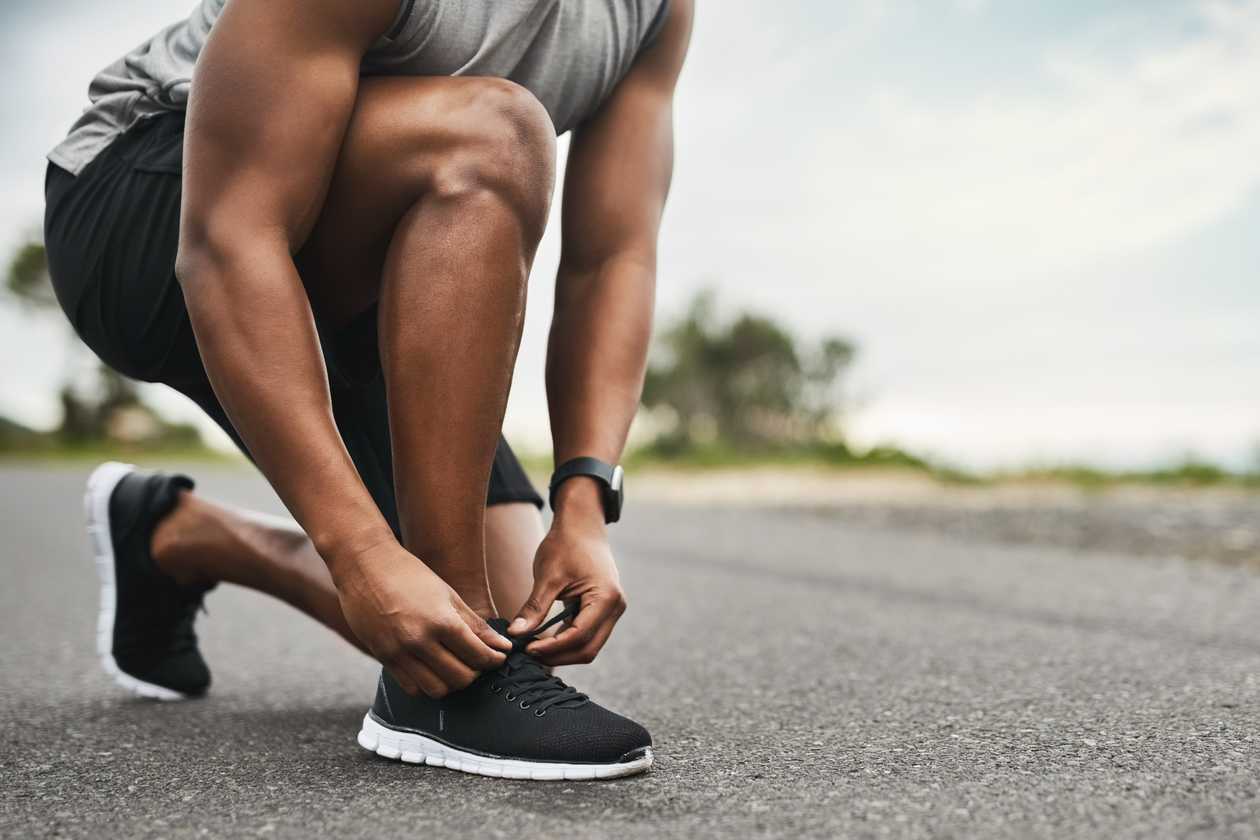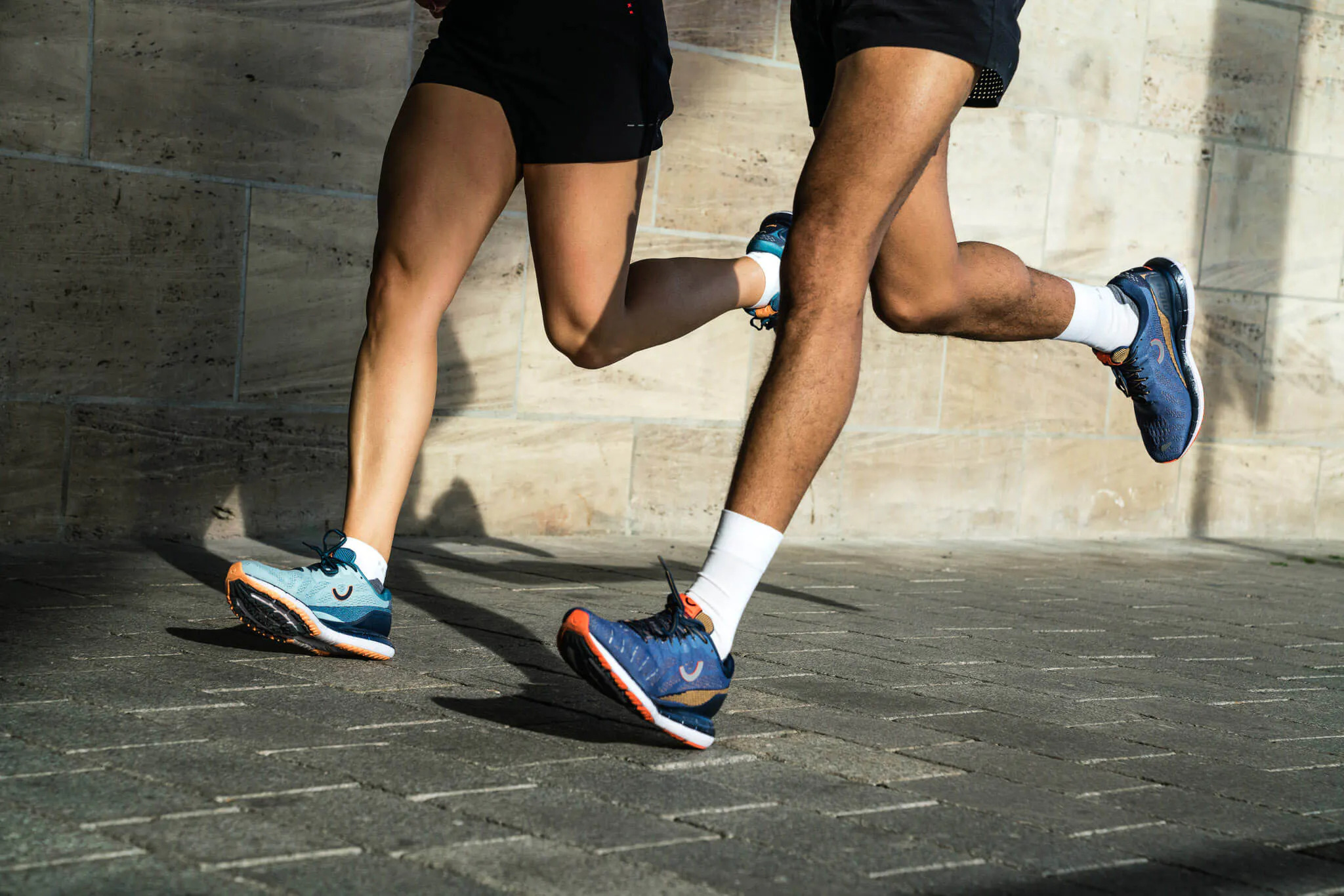Home>Misc>Featured>What Is Difference Between Sneakers And Running Shoes


Featured
What Is Difference Between Sneakers And Running Shoes
Modified: August 19, 2023
Discover the key distinctions between sneakers and running shoes. Learn about the features that make one ideal for casual wear and the other suitable for high-impact activities. Featured comparison guide.
Introduction
Welcome to this article where we will explore the fascinating world of sneakers and running shoes. These two types of footwear have become incredibly popular among people of all ages and lifestyles. Whether you are a fashion-conscious individual looking for stylish footwear or a fitness enthusiast in search of performance-enhancing shoes, understanding the differences between sneakers and running shoes is essential.
Sneakers and running shoes are often used interchangeably, but they are not exactly the same. While both serve the purpose of providing comfort and protection for your feet, they have distinct characteristics that set them apart. In this article, we will delve into the design and structure, purpose and function, material, usage, comfort and support, and price differences between sneakers and running shoes.
By gaining a deeper understanding of these differences, you will be better equipped to choose the right type of footwear based on your needs and preferences. Whether you are hitting the gym, going for a jog, or simply rocking a sporty fashion look, knowing the distinctions between sneakers and running shoes will help you make a more informed decision.
So, let’s dive into the mesmerizing world of sneakers and running shoes and discover the unique qualities that make each of them stand out.
Definition of Sneakers
Sneakers, also known as athletic shoes or trainers, are casual footwear designed for everyday wear and various sports activities. They are characterized by their comfortable and flexible construction, making them a popular choice for individuals seeking a versatile and stylish shoe option.
Sneakers typically feature a low-top or mid-top design, with a soft and cushioned sole that provides shock absorption and support. They are often made with a combination of breathable materials such as mesh, leather, or synthetic fabric, allowing for good ventilation and preventing excessive moisture buildup.
Originally, sneakers were primarily associated with sports enthusiasts and athletes. They were designed to provide the necessary support, traction, and cushioning for activities like running, basketball, or tennis. However, over time, sneakers have evolved to become a prominent fashion trend, with various brands and designers offering a wide range of styles, colors, and patterns.
One of the key characteristics of sneakers is their versatility. They can be worn with a casual outfit for a day out with friends, paired with jeans for a trendy street style look, or even dressed up with a skirt or dress for a more fashion-forward ensemble. Sneakers have become a staple in many individuals’ wardrobes due to their comfort, practicality, and ability to effortlessly elevate any outfit.
In recent years, sneaker culture has gained significant traction, with sneakerheads collecting rare and exclusive sneaker releases. This subculture celebrates the design, history, and craftsmanship behind sneakers, turning them into prized possessions and status symbols.
To sum up, sneakers are casual and athletic shoes that offer comfort, style, and versatility. Whether you are engaging in physical activities or looking to make a fashion statement, sneakers are the go-to choice for many people.
Definition of Running Shoes
Running shoes, as the name suggests, are specifically designed for running and other high-impact athletic activities. They are engineered to provide optimum support, cushioning, stability, and traction to enhance performance and prevent injuries during intense physical exertion.
Running shoes differ from sneakers in several ways. Firstly, they have a more structured design, with features such as a reinforced toe box and a stiffened heel counter to provide stability and protect the feet from impact forces. The sole of running shoes is typically made from durable rubber with various patterns and grooves that offer grip and traction on different running surfaces.
Another key aspect of running shoes is their cushioning system. These shoes often incorporate advanced technologies such as air or gel-filled midsoles or foam materials that absorb shock and reduce the impact on joints, especially during long-distance running. The cushioning helps to alleviate pressure and provide a comfortable running experience.
Additionally, running shoes are made from lightweight and breathable materials to promote airflow and keep the feet cool and dry. They often feature mesh upper constructions that allow for better ventilation and moisture-wicking capabilities to prevent sweating and reduce the risk of blisters or discomfort during prolonged runs.
Unlike sneakers, running shoes are designed with specific foot strike patterns in mind. They come in different categories, such as neutral, stability, or motion control, to cater to various types of pronation (the way the foot rolls inward during each stride). This ensures that the runner’s gait is properly supported and prevents excessive rotation or stress on the feet.
Furthermore, running shoes may have different levels of support and flexibility, depending on the intended use and the runner’s individual needs. Some models may offer a more minimalistic and lightweight design, suitable for experienced runners seeking a natural and responsive feel, while others provide more structure and arch support for those with flat feet or overpronation.
To sum up, running shoes are specifically engineered footwear designed for running, providing support, cushioning, stability, and traction. Their purpose is to enhance performance, protect the feet, and minimize the risk of injuries during high-impact activities.
Design and Structure Differences
When it comes to design and structure, sneakers and running shoes have distinct differences that cater to their respective purposes and activities.
Sneakers typically feature a low-top or mid-top design, with a lower profile that allows for more freedom of movement around the ankles. They have a casual and versatile aesthetic, with a wide range of colors, patterns, and materials to choose from. Sneakers often prioritize style and comfort, with cushioning and flexible soles that provide a lightweight and effortless feel. The emphasis on fashion makes sneakers a popular choice for everyday wear and casual activities.
On the other hand, running shoes have a more structured design to enhance performance and prevent injuries during high-impact activities. They often feature a higher ankle collar, providing additional support and stability and reducing the risk of ankle sprains. The structure of running shoes focuses on functionality, with a reinforced toe box and a stiffened heel counter to ensure proper foot alignment and minimize the risk of overpronation or supination during running strides.
The soles of running shoes are typically thicker and more cushioned than those of sneakers. They are designed to absorb shock and provide maximum protection and comfort, especially during repetitive impact movements. The outsoles of running shoes have specific patterns and grooves that offer optimal traction and grip on various surfaces, providing stability and preventing slippage during running.
Additionally, running shoes may incorporate advanced technologies and features to improve performance. This can include features such as energy-returning midsole materials, pronation control systems, or even carbon fiber plates for enhanced propulsion. These design elements are specifically aimed at maximizing the runner’s efficiency and optimizing their overall running experience.
In terms of materials, sneakers often utilize a combination of synthetic fabrics, leather, and mesh for breathability and flexibility. Running shoes, on the other hand, prioritize durability, support, and moisture-wicking properties. They typically feature lightweight and breathable mesh uppers that allow for ventilation and prevent the build-up of sweat and moisture during intense physical activity.
In summary, sneakers and running shoes have distinct design and structure differences. Sneakers prioritize style and everyday comfort, while running shoes focus on performance, support, and protection during high-impact activities.
Purpose and Function Differences
Sneakers and running shoes serve different purposes and have distinct functions based on the activities they are intended for.
Sneakers are primarily designed for casual wear and everyday activities. They offer a comfortable and stylish option for individuals looking for footwear that can be worn in various settings, such as walking around the city, running errands, or socializing with friends. Sneakers provide cushioning and flexibility, making them suitable for low-impact activities and light exercise routines. Their purpose is to offer all-day comfort while adding a fashionable touch to your outfit.
On the other hand, running shoes are specifically engineered for athletic activities, particularly running. Their function is to provide optimal support, cushioning, stability, and traction to enhance performance and minimize the risk of injuries. Running shoes are designed with features like shock-absorbing cushioning, supportive elements, and specialized soles to accommodate the impact and demands of running. They aid in improving running efficiency, reducing fatigue, and mitigating the potential strain on the feet and joints.
While some sneakers may be suitable for light jogging or occasional workouts, they lack the advanced technologies and specialized features that running shoes offer. Running shoes are built to withstand the repetitive impact of running and provide the necessary support and protection for the feet. They are designed to accommodate the biomechanics of running and cater to various foot types and pronation patterns, ensuring better body alignment and reducing the risk of overuse injuries.
Furthermore, running shoes are often categorized based on different running terrains and distances. There are models specific to road running, trail running, or track and field events, each tailored to meet the requirements of different surfaces and distances. The functionality and features of running shoes aim to optimize performance, improve endurance, and provide a smooth and comfortable running experience.
Ultimately, the purpose of sneakers is versatility and style, while the purpose of running shoes is performance and injury prevention during running and other high-impact activities.
Material Differences
The materials used in the construction of sneakers and running shoes differ to accommodate their specific purposes and functionalities.
Sneakers often incorporate a combination of materials such as synthetic fabrics, leather, and mesh. The upper part of sneakers is typically made from these materials to provide flexibility, breathability, and style. Synthetic fabrics like nylon or polyester are commonly used due to their durability and versatility. Leather is also utilized for a more premium look and feel, while mesh offers breathability and ventilation to prevent heat and moisture build-up during casual wear.
On the other hand, running shoes focus on materials that prioritize support, cushioning, and durability. The upper part of running shoes is commonly made from lightweight and breathable mesh materials. Mesh allows for optimal airflow, keeping the feet cool and dry during intense physical activities. Running shoes may also incorporate synthetic overlays or support structures to enhance stability and foot lockdown.
The midsole, or the cushioning layer, is an important component of both sneakers and running shoes. Sneakers typically have a softer and more lightweight midsole for everyday comfort. This cushioning may be made from materials such as foam or gel to provide shock absorption and a plush feel. Running shoes, in contrast, often utilize advanced cushioning technologies like EVA foam, air-filled chambers, or specialized gels to optimize impact protection, energy return, and responsiveness during running.
The outsole, or bottom part, of sneakers and running shoes also varies in terms of materials. Sneakers may have a rubber outsole with a variety of patterns and treads designed for general traction and versatility across different surfaces. Running shoes, on the other hand, have outsoles that are specifically engineered for the demands of running. They feature durable rubber compounds and unique traction patterns designed to provide optimal grip and prevent slips on various terrains, including roads, trails, or tracks.
In summary, sneakers and running shoes differ in the materials used for their construction. Sneakers prioritize style and casual comfort, utilizing a combination of materials like synthetic fabrics, leather, and mesh. Running shoes focus on support, cushioning, and durability, with lightweight and breathable mesh uppers, advanced cushioning technologies, and specialized rubber outsoles designed for running purposes.
Usage Differences
The usage of sneakers and running shoes varies based on the activities and situations they are designed for.
Sneakers are versatile and suitable for a wide range of casual activities and everyday wear. They are commonly used for walking, running errands, hanging out with friends, or engaging in light workouts. Sneakers offer comfort, style, and flexibility, making them a popular choice for individuals who value both fashion and practicality. They can be paired with various outfits, including jeans, shorts, leggings, or casual dresses, for a trendy and laid-back look.
On the other hand, running shoes are specifically designed for running and other high-impact activities. They are engineered to provide the necessary support, cushioning, stability, and traction for optimal performance and injury prevention during intense physical exercise. Running shoes are suitable for activities such as jogging, sprinting, long-distance running, or participating in organized races and events. They are designed to withstand the repetitive impact and demands of running, providing the necessary protection and stability for the feet and joints.
While sneakers may be comfortable for light jogging or occasional workouts, they lack the specialized features and supportive structure that running shoes offer. Using sneakers for extended running sessions or high-intensity training may increase the risk of discomfort, instability, or potential injuries due to inadequate cushioning and support.
Moreover, running shoes are designed for specific terrains and distances. Road running shoes are optimized for asphalt and concrete surfaces, while trail running shoes have rugged outsoles and additional protection to navigate uneven and off-road terrains. Track and field shoes are designed for specific track events, providing lightweight construction and traction for optimal performance. Each type of running shoe is engineered to provide the necessary grip, stability, and functionality based on the running environment.
In summary, sneakers are versatile and suitable for casual activities and everyday wear, while running shoes are specifically designed for running and high-impact athletic activities. Their usage varies based on the level of support, cushioning, and traction required for different activities and terrains.
Comfort and Support Differences
When it comes to comfort and support, there are notable differences between sneakers and running shoes.
Sneakers are known for their overall comfort, providing a cushioned and flexible feel. They prioritize comfort for everyday wear and casual activities. Sneakers typically have softer midsoles and more forgiving materials, offering a comfortable fit and a plush sensation. They are designed to provide all-day comfort, making them an excellent choice for individuals who value comfort and style in their footwear.
On the other hand, running shoes are specifically engineered to provide maximum comfort and support during high-impact activities like running. They are designed to absorb shock and reduce the strain on joints, particularly during repetitive movements. The midsole of running shoes is often made from advanced cushioning materials, such as foam or specialized gels, that provide excellent shock absorption and energy return. This cushioning helps to minimize the impact on the feet and provides a more comfortable running experience.
In terms of support, running shoes typically offer more structure and stability compared to sneakers. They have a firmer midsole and a reinforced heel counter to provide better foot support and prevent overpronation or supination (excessive inward or outward rolling of the foot). Running shoes also feature specific technologies and support systems, such as arch support or pronation control features, to cater to different foot types and running styles. These support elements enhance stability, reduce the risk of injuries, and ensure proper body alignment during runs.
Sneakers, while comfortable, usually have a more relaxed and flexible construction, prioritizing freedom of movement rather than extensive support. They are designed to provide a more casual and less structured feel, which may not be ideal for individuals with specific foot issues or those engaging in high-impact activities.
It’s important to note that the level of comfort and support can vary among different models and brands within the sneaker and running shoe categories. Manufacturers incorporate different technologies, materials, and designs to cater to varying preferences and needs. It is recommended to try on different shoe options and choose the one that provides the best combination of comfort and support for your specific requirements.
Overall, while both sneakers and running shoes offer comfort, comfort and support are prioritized differently. Sneakers focus more on all-day comfort and flexibility, while running shoes prioritize maximum support and cushioning to enhance performance and prevent injuries.
Price Differences
When comparing sneakers and running shoes, one factor that sets them apart is the difference in pricing.
Sneakers, being more focused on style and everyday wear, generally come at a more affordable price range. They are available in a wide variety of brands, styles, and price points, catering to different budgets. Sneakers can range from budget-friendly options to high-end designer brands, allowing individuals to find the perfect pair within their preferred price range. The cost of sneakers is often influenced by factors such as the brand reputation, material quality, and any additional features or unique designs.
Running shoes, on the other hand, tend to be priced higher compared to sneakers. This is primarily because running shoes are engineered with advanced technologies, materials, and support systems specifically designed to enhance performance and provide comfort during high-impact activities. The extra research and development that goes into creating these specialized features contribute to a higher cost. Additionally, running shoe brands often invest in rigorous testing and quality control to ensure durability and performance, which also contributes to the pricing.
The price of running shoes can vary based on factors such as brand reputation, the level of cushioning and support, and the target market segment. On average, running shoes tend to fall into a higher price bracket compared to sneakers due to the specialized features and performance-driven design that they offer.
It’s worth noting that while running shoes may have a higher upfront cost, investing in a quality pair can prove to be beneficial in the long run. Higher-priced running shoes often offer improved durability and longevity, ensuring that they can withstand the demands of regular running activities. Additionally, they provide better support and cushioning, reducing the risk of injuries and enhancing overall comfort during runs.
Ultimately, the price difference between sneakers and running shoes can be attributed to the specific design, advanced technologies, and performance-oriented features that are inherent in running shoes. Sneakers, on the other hand, are more accessible in terms of pricing, catering to a wider range of budgets and lifestyle choices.
Conclusion
Throughout this article, we have explored the differences between sneakers and running shoes in various aspects, including their design and structure, purpose and function, material composition, usage, comfort and support levels, and pricing.
Sneakers and running shoes serve different purposes and cater to distinct activities. Sneakers are versatile and stylish, perfect for everyday wear and casual activities, whereas running shoes are specifically designed for running and high-impact athletic activities, offering optimal support, cushioning, and stability.
The design and structure of sneakers prioritize flexibility and fashion, while running shoes emphasize stability, protection, and performance optimization. Sneakers commonly feature softer cushioning, a casual aesthetic, and a wide array of materials and styles. In contrast, running shoes have a more structured design, advanced cushioning technologies, and specialized outsoles to withstand the demands of running and offer necessary support.
The materials used in sneakers and running shoes also differ. Sneakers commonly utilize a combination of synthetic fabrics, leather, and mesh, prioritizing breathability, flexibility, and style. Running shoes, on the other hand, prioritize lightweight, breathable mesh for ventilation, durability, and moisture-wicking properties.
There are also notable differences in their usage. Sneakers are suitable for everyday wear and casual activities, while running shoes are specifically engineered for running and high-impact athletic activities. Running shoes offer the necessary stability, cushioning, and traction required to enhance performance and minimize the risk of injuries during intense physical exercise.
Furthermore, comfort and support levels differ between sneakers and running shoes. Sneakers prioritize overall comfort and flexibility, providing a plush and casual feel. Running shoes, on the other hand, offer enhanced support, stability, and cushioning to withstand the impact of running and ensure optimal performance.
Lastly, sneakers and running shoes differ in terms of pricing. Sneakers generally come in a wide range of prices, making them more accessible to different budgets. Running shoes, due to their specialized features and technologies, tend to have a higher price range, reflecting the investment in performance and durability.
In conclusion, understanding the differences between sneakers and running shoes is essential in choosing the right footwear for your specific needs and preferences. Whether you prioritize style and versatility or require specialized support and cushioning for running, selecting the appropriate footwear will ensure comfort, performance, and overall satisfaction.
